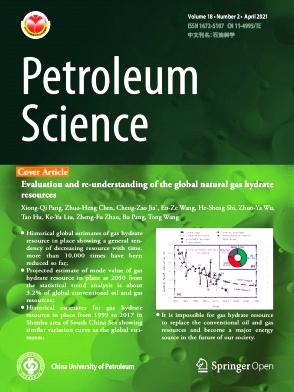利用坐标注意增强DenseNet进行衍射分类成像
IF 6.1
1区 工程技术
Q2 ENERGY & FUELS
引用次数: 0
摘要
在油气勘探中,小型溶洞和断层是勘探的重要目标。前者通常是碳酸盐岩储层的储集空间,而后者通常是油气的运移通道。由于这些差异,岩溶溶洞和断层的分类识别对储层发育具有重要意义。传统的地震属性和衍射成像技术可以有效地识别地震图像中的不连续面,但这些技术无法区分这些不连续面是岩溶空洞、断层还是其他结构。如何在地震属性图和衍射成像剖面中准确定位和分类岩溶溶洞或断层,对地震解释提出了挑战。在地震资料中,散射波与岩溶洞等小尺度散射体有关,而绕射波是断层、反射面边缘和裂缝等不连续结构的地震响应。为了实现地震图像中小尺度岩溶洞和断层的分类识别,提出了一种衍射分类成像方法,利用改进的DenseNet对方位角-倾角图像矩阵中的衍射波和散射波进行分类。我们在DenseNet中引入了一个坐标关注模块,可以更精确地提取方位角-倾角图像矩阵中衍射波和散射波的动态和方位角特征。利用这些提取的特征,改进的DenseNet可以产生可靠的衍射/散射波概率,实现基于衍射成像的高精度空腔和断层自动分类。该方法在合成数据集上的分类准确率达到96%。现场数据实验表明,该方法能够对小尺度断层和散射体进行准确分类,进一步提高了复杂地质构造中衍射成像的分辨率,有助于岩溶缝洞型储层的定位。本文章由计算机程序翻译,如有差异,请以英文原文为准。
Diffraction classification imaging using coordinate attention enhanced DenseNet
In oil and gas exploration, small-scale karst cavities and faults are important targets. The former often serve as reservoir space for carbonate reservoirs, while the latter often provide migration pathways for oil and gas. Due to these differences, the classification and identification of karst cavities and faults are of great significance for reservoir development. Traditional seismic attributes and diffraction imaging techniques can effectively identify discontinuities in seismic images, but these techniques do not distinguish whether these discontinuities are karst cavities, faults, or other structures. It poses a challenge for seismic interpretation to accurately locate and classify karst cavities or faults within the seismic attribute maps and diffraction imaging profiles. In seismic data, the scattering waves are associated with small-scale scatters like karst cavities, while diffracted waves are seismic responses from discontinuous structures such as faults, reflector edges and fractures. In order to achieve classification and identification of small-scale karst cavities and faults in seismic images, we propose a diffraction classification imaging method which classifies diffracted and scattered waves in the azimuth-dip angle image matrix using a modified DenseNet. We introduce a coordinate attention module into DenseNet, enabling more precise extraction of dynamic and azimuthal features of diffracted and scattered waves in the azimuth-dip angle image matrix. Leveraging these extracted features, the modified DenseNet can produce reliable probabilities for diffracted/scattered waves, achieving high-accuracy automatic classification of cavities and faults based on diffraction imaging. The proposed method achieves 96% classification accuracy on the synthetic dataset. The field data experiment demonstrates that the proposed method can accurately classify small-scale faults and scatterers, further enhancing the resolution of diffraction imaging in complex geologic structures, and contributing to the localization of karstic fracture-cavern reservoirs.
求助全文
通过发布文献求助,成功后即可免费获取论文全文。
去求助
来源期刊

Petroleum Science
地学-地球化学与地球物理
CiteScore
7.70
自引率
16.10%
发文量
311
审稿时长
63 days
期刊介绍:
Petroleum Science is the only English journal in China on petroleum science and technology that is intended for professionals engaged in petroleum science research and technical applications all over the world, as well as the managerial personnel of oil companies. It covers petroleum geology, petroleum geophysics, petroleum engineering, petrochemistry & chemical engineering, petroleum mechanics, and economic management. It aims to introduce the latest results in oil industry research in China, promote cooperation in petroleum science research between China and the rest of the world, and build a bridge for scientific communication between China and the world.
 求助内容:
求助内容: 应助结果提醒方式:
应助结果提醒方式:


